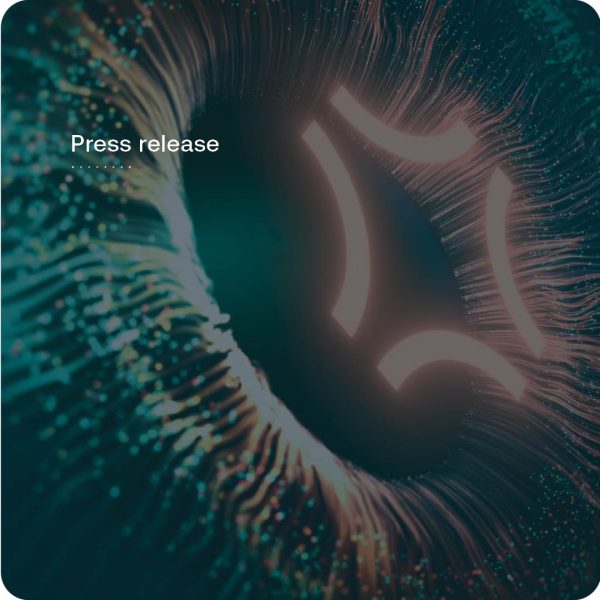Trends in the era of digitalisation: New hedging solutions to meet customer expectations
Increasing digitalisation in industry
Industry 4.0 – the digitalisation and networking of industry – has led to a profound change in business value creation. In the meantime, entire machine parks at manufacturing companies can be controlled by cyber-physical systems. Advanced digitalisation in industry also leads to networked, global value chains. The just-in-time production supply chain is being expanded by using tools with new technologies such as Internet of Things devices or artificial intelligence to further increase efficiency. This results in new, partly unknown corporate risks. As technological change constantly accelerates, many companies continue to shift the values that drive revenue and profit today: from physical products to intangible assets. The business models of companies have changed and a larger number of companies (e.g. platform providers) have emerged that generate their value more from intangible goods and services than from tangible assets. The changes described present new challenges for industrial insurance.
Risk of business interruption becoming more complex
The risk of business interruption is becoming increasingly complex. Digitalisation is increasingly leading to external events that lead to business interruption without any material damage arising for the insured company or a supplier/customer. In addition, there are now a large number of companies that carry hardly any tangible assets. The focus of the hedging requirements of companies that generate their value predominantly from intangibles and services is on protecting earnings and cash flow risks. The classic business interruption (BI) insurance offers insurance cover for the resulting loss of earnings following material damage to the policyholder or a supplier/buyer. However, non-damage business interruption insurance (NDBI) focuses on hedging of earnings and cash flow risks. In the case of NDBI, in contrast to classic BI insurance, certain individually agreed risks of loss of earnings (for example IT downtimes) can be insured independently, regardless of the occurrence of material damage. It should be noted that these are tailor-made cover concepts. The NDBI can also be designed as parametric cover. The decisive factor for this is that a fixed trigger (objective event) for the loss event and a fixed compensation rate are defined in advance in the contract design. If the predefined event occurs, the insured company will receive the defined compensation. The customer does not have to prove the actual loss. The simplicity of claim settlement is an advantage over classic cover (in this case, proof of actual loss is required). In the case of parametric cover, a high degree of automation is also possible by using the digitalisation options on the part of the contracting parties (for example, automated compensation).
Product liability risk changing in the wake of digitalisation
The product liability risk is changing in the wake of digitalisation such that a large proportion of manufacturing companies in all industry sectors are increasingly equipping products with software, for example, machines that can be controlled by software. This also leads to expansion of operational activity with regard to digital services, such as software implementation, modification, maintenance and support of these products. This in turn has an impact on the risk profile of product liability. This can lead to new types of IT economic losses at third parties, for example, if a flawed software update results in an interruption to production of a third party. Such novel loss events are not covered under classic product liability insurance. One possible insurance solution here may be a tech E&O insurance policy for manufacturing companies that offers insurance cover for such new types of economic loss.
Outlook
The risk landscape has become more complex and will continue to change dynamically in the wake of ongoing technological transition. For the policyholder business, the possibility of adequate risk management is an important prerequisite for daring to innovate. Industrial insurance brokers are particularly important here due to their insights into their customers’ new technical applications for identifying new risks early on and developing innovative risk transfer options together with insurers. By expanding the options for insurance technology, in particular through data analytics, new types of risks should be better insured in the future. Furthermore, in addition to risk transfer in the form of insurance, a technology-focused risk management consultation with industrial insurance brokers and industrial insurers is required in the wake of digitalisation to adequately counter novel risks to business.
Similar Posts

Crowdstrike-Vorfall – Erhalten betroffene Unternehmen eine Entschädigung aus ihrer Cyber-Versicherung?
Ein fehlerhaftes Update des US-amerikanischen IT- Sicherheitsdienstleisters Crowdstrike hat am Freitag zu weitreichenden Störungen geführt. Experten sprechen vom größten, nicht…

Weshalb ein stabiler D&O-Markt unwahrscheinlich ist
In den letzten Jahren wurde die deutsche Wirtschaft durch die Covid-19 Pandemie, geopolitische Krisen sowie hohe Inflation geprägt. Sowohl wirtschaftliche…

Berkley Deutschland – einer der führenden Anbieter von Spezialversicherungen und Risikolösungen für den Mittelstand mit umfassendem Produktangebot in Deutschland und Österreich
Im Interview sprechen Alexa von Brevern, Manager Financial Lines und Manuel Metz, Manager Cyber Europe darüber, warum Versicherungsschutz insbesondere für…

Finlex Financial Lines Summit Austria 2024
[vc_column width="1/1"]This was our 1st Financial Lines Summit Austria - the industry meeting of the rapidly growing cyber and financial…

New Cyber Expert Lane on the Finlex platform with innovative tender feature
Specialist broker Finlex is launching its new Cyber Expert Lane for companies of all sizes and in all sectors. The…

Smarter D&O-Versicherungsschutz auch für große Kanzleien
Erweitertes Angebot der Zurich Gemeinsam mit den Versicherern Markel, ERGO, Newline und Zurich bietet Finlex eine spezielle Unternehmens-D&O-Versicherung für Kanzleien…

The requirements of § 81 para. 2 VVG (grossly negligent causation of the insurance case) in Cyber insurance
[vc_column width="1/1"] (Erichsen/Seiz, r+s 2024, S. 97) Unfortunately, Cyber attacks on businesses are no longer uncommon, but rather part of…

Impact of the current ECJ jurisdiction on Art. 82 GDPR on Cyber insurance
In three recent judgments (C-687/21, C-340/21 and C-456/22), the ECJ has clarified its jurisdiction on the data protection responsibility of…

Personal D&O insurance on Finlex platform with three insurers
Managers now can protect themselves against liability risks targeting their personal assets. They can purchase a personal D&O insurance via…

Finlex expands its Cyber Ecosystem
To counteract the developments in Cyber crime, Cyber insurance is continuously changing and improving. Companies, however, need a symbiosis of…
